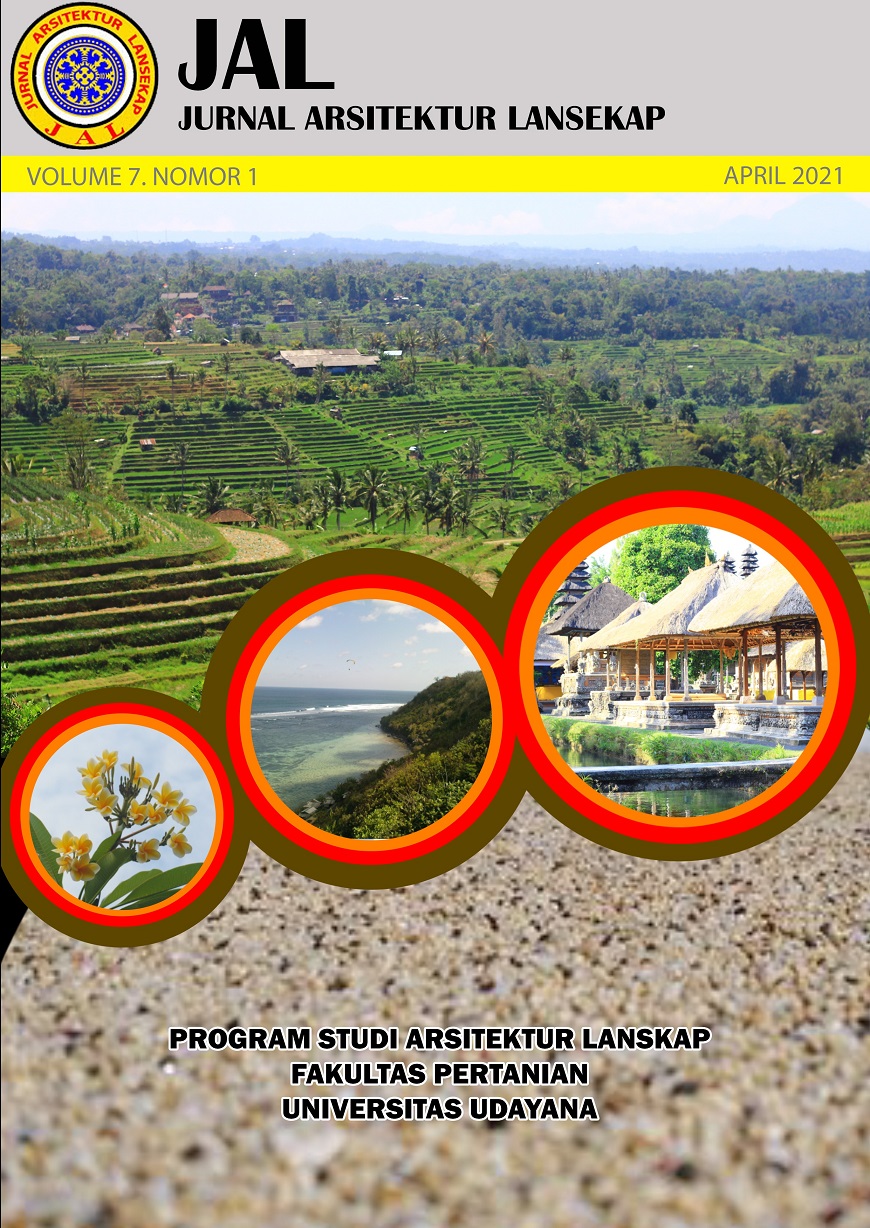Penilaian efektivitas Lapangan Lumintang sebagai ruang terbuka publik di Kota Denpasar
Abstract
Lumintang Field is one of the artificial landscapes in the form of public open space with its main function as a ceremonial field. At present, the field also has an additional function as a place for sports, recreations and educations, its evidenced by the construction of various facilities to support community activities. Although it has been improved, this field still has problems, such as the number of visitors stepping on low plants when entering the field, so that access to the field that is not functioning properly and the absence of a parking lot makes visitors park carelessly. The purpose of this study is to assess the effectiveness of Lumintang Field as a public open space in Denpasar City. The method used is a survey method with data collection techniques are observation, questionnaire distribution, interviews, and literature study, with data analysis such as Lumintang Field facilities analysis and analysis of public space effectiveness. The results revealed that the existence of Lumintang Field as a public open space in Denpasar City was quite effective with a value of 2.0. The participation of visitors is needed to participate in maintaining the cleanliness and preservation of Lumintang Field, and the management can make the results of the research as a reference in the future improvement of the field area.
Downloads
References
Mantra, R. D. 2016. Rencana Kerja Pembangunan Daerah Kota Denpasar Tahun 2016. Denpasar.
Porajouw, E. F. 2017. Efektivitas Ruang Terbuka Publik Di Kota Tomohon. E-Jurnal Universitas Sam Ratulangi, 4(1):136–148.
Rahmiati, D. 2017. Kajian Elemen Pembentuk Ruang Kota pada Ruang Terbuka Publik Kota (Studi Kasus : Alun-Alun Karanganyar). Universitas Indo Global Mandiri, 1(2):1–8.
Sudjana. 2005. Metoda Statistika (1st ed.). Bandung: PT. Tarsito Bandung.
Sugiyono. 2010. Metode Penelitian Kuantitatif, Kualitatif dan R&D. Bandung: Alfabeta.
An author who publishes in the Jurnal Arsitektur Lansekap (JAL) agrees to the following terms:
- Author retains the copyright and grants the journal the right of first publication of the work simultaneously licensed under the Creative Commons Attribution-ShareAlike 4.0 License that allows others to share the work with an acknowledgement of the work's authorship and initial publication in this journal
- Author is able to enter into separate, additional contractual arrangements for the non-exclusive distribution of the journal's published version of the work (e.g., post it to an institutional repository or publish it in a book) with the acknowledgement of its initial publication in this journal.
- Author is permitted and encouraged to post his/her work online (e.g., in institutional repositories or on their website) prior to and during the submission process, as it can lead to productive exchanges, as well as earlier and greater citation of the published work (See The Effect of Open Access).
Read more about the Creative Commons Attribution-ShareAlike 4.0 Licence here: https://creativecommons.org/licenses/by-sa/4.0/.







